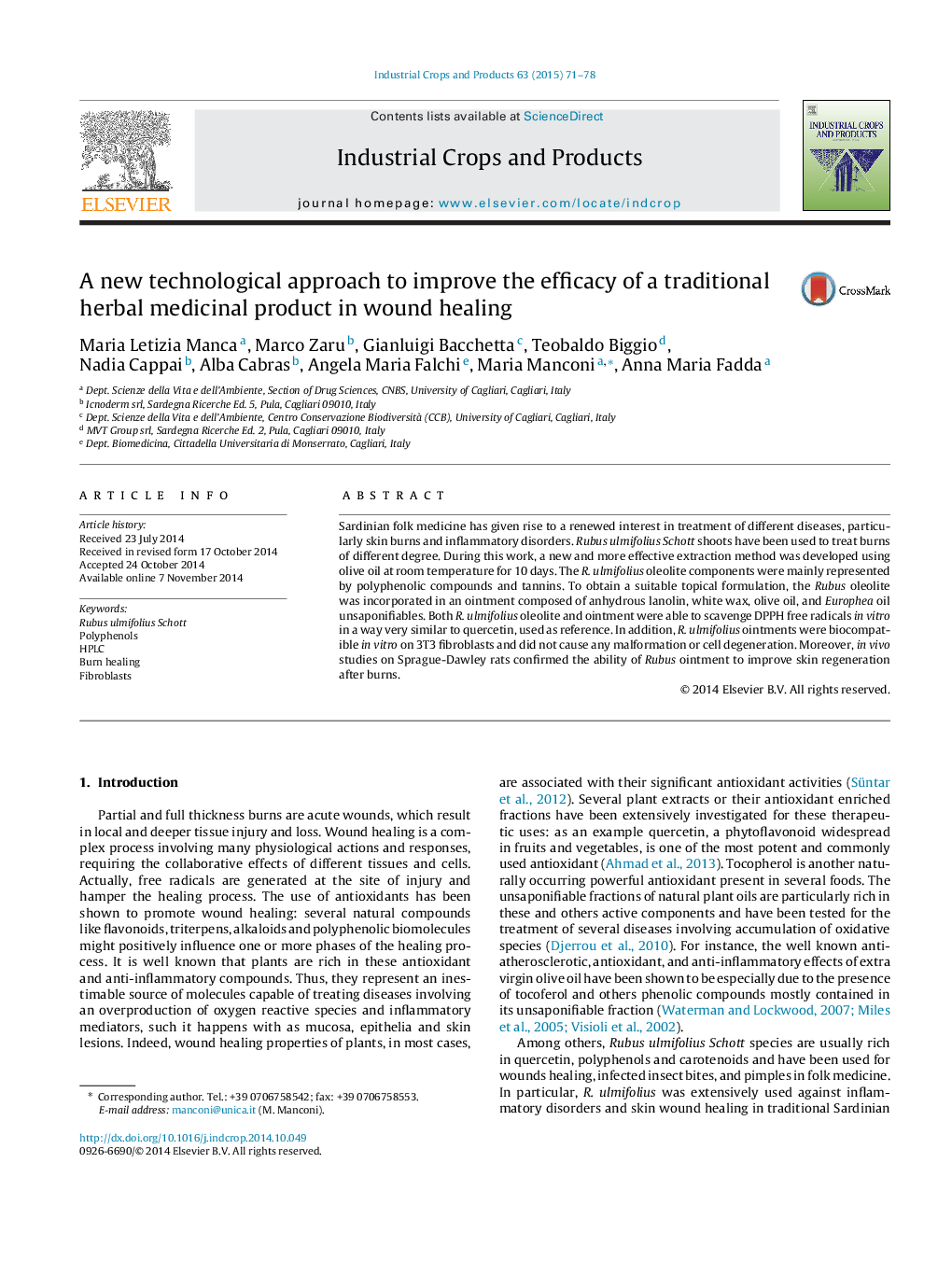| Article ID | Journal | Published Year | Pages | File Type |
|---|---|---|---|---|
| 4513242 | Industrial Crops and Products | 2015 | 8 Pages |
•Rubus ulmifolius Schott shoots oleolite was successfully obtained at 25 °C.•Polyphenols and tannins were the main components of R. ulmifolius oleolite.•A suitable semisolid formulation for topical application was prepared.•R. ulmifolius ointment promoted the burn healing in vivo according to ethnophytomedicine.
Sardinian folk medicine has given rise to a renewed interest in treatment of different diseases, particularly skin burns and inflammatory disorders. Rubus ulmifolius Schott shoots have been used to treat burns of different degree. During this work, a new and more effective extraction method was developed using olive oil at room temperature for 10 days. The R. ulmifolius oleolite components were mainly represented by polyphenolic compounds and tannins. To obtain a suitable topical formulation, the Rubus oleolite was incorporated in an ointment composed of anhydrous lanolin, white wax, olive oil, and Europhea oil unsaponifiables. Both R. ulmifolius oleolite and ointment were able to scavenge DPPH free radicals in vitro in a way very similar to quercetin, used as reference. In addition, R. ulmifolius ointments were biocompatible in vitro on 3T3 fibroblasts and did not cause any malformation or cell degeneration. Moreover, in vivo studies on Sprague-Dawley rats confirmed the ability of Rubus ointment to improve skin regeneration after burns.
Graphical abstractFigure optionsDownload full-size imageDownload as PowerPoint slide
